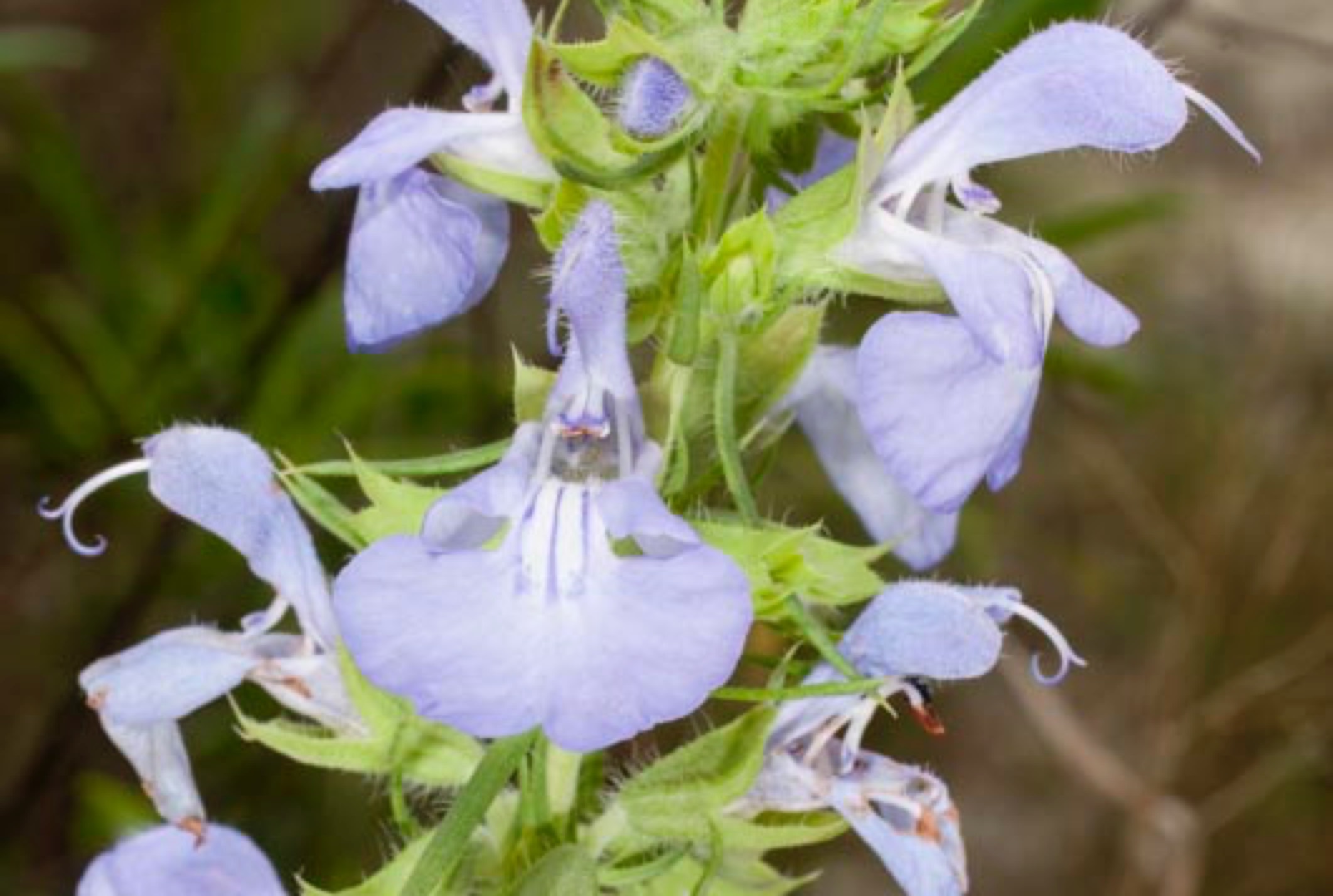Texas Wildbuds
Salvia engelmannii
(Engelmann’s Sage)
| Scientific Name | Salvia engelmannii | USDA PLANTS Symbol | SAEN2 |
| Common Name | Englemann's Sage | ITIS Taxonomic Serial No. | 32711 |
| Family | Lamiaceae (Mint) | Wildflower Center Ref. | Click Here |
| Description | Habitat: Dry, rocky limestone soils of prairies, hillsides and rock outcrops. Plant: Upright perennial in dense bushy clumps, numerous stems 6 to 16 inches tall; small erect, glandular (sticky) hairs on foliage. Leaves: Opposite, narrow, linear or oblanceolate, petiolate, green 1-1/2 to 3 inches long. Inflorescence: Pale purple to pale blue flowers about 1 inch long in loose, terminal racemes; each flower with a corolla with two lips, the smaller upper lip resembles a hood and the much larger broad three-lobed lower lip; lower lip with two prominent whiteish areas near the base; each flower with leaf-like bract below. Bloom Period: April to June. Reference: "Manual of the Vascular Plants of Texas" by Correll and Johnston, "Wildflowers of the Texas Hill Country" by Marshall Enquist and "Wildflowers of Texas" by Geyata Ajilvsgi. |
BONAP Distribution Map Map Color Key Map Color Key |
Texas Status: Native |
Banner photo of Castilleja indivisa and Lupinus ssp. taken along FM 1323 north of Johnson City, Blanco County
© Tom Lebsack 2025
Every attempt is made to provide accurate, up-to-date, and relevant information, but the completeness or accuracy of any information presented on this website cannot be guaranteed. I use authoritative references to insure high standards of accuracy and review and update the information frequently.





